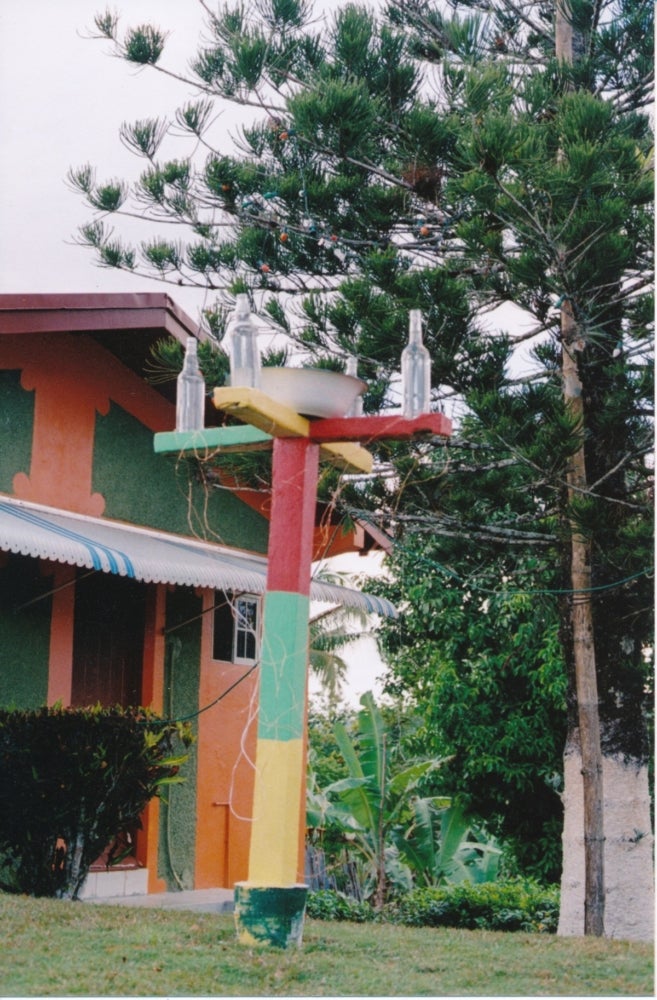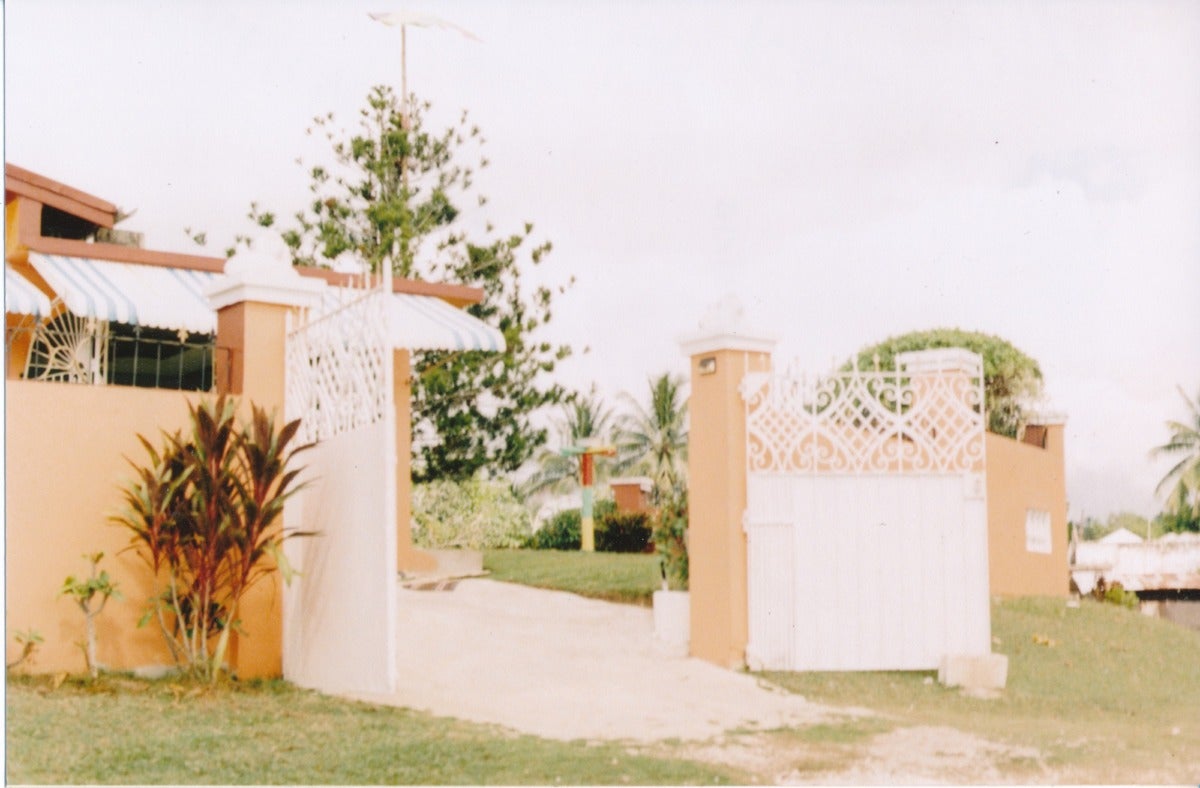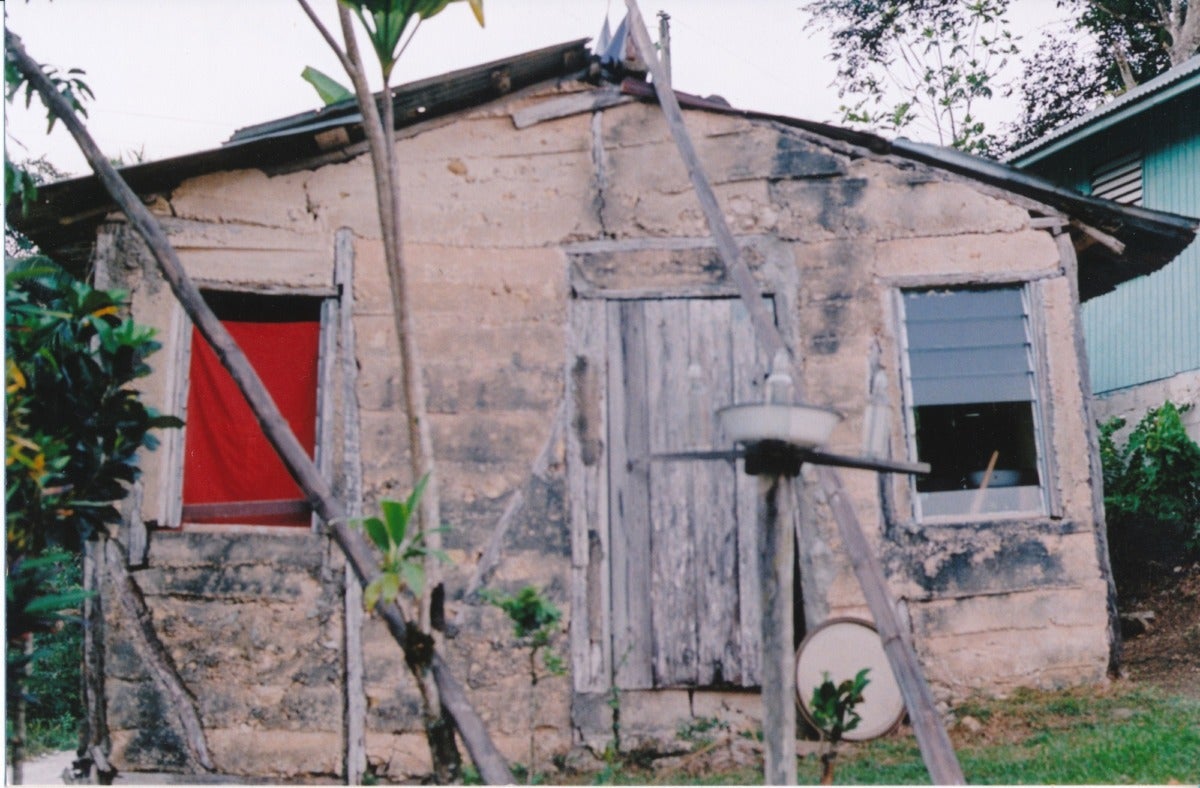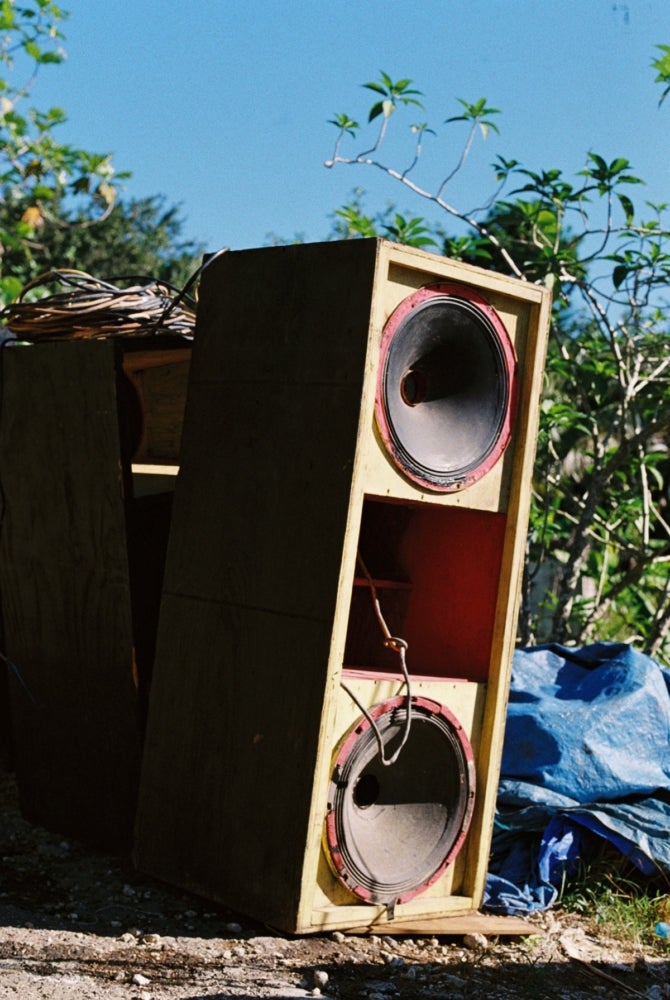
Jamaica is most notably recognized for its contribution of sound through the genre of reggae, but less is known about the island’s other cultural sounds tied to the Taíno Maroons, Myalism, Kumina, and Revivalists. Within these societies, sound is an essential component of communication with the spiritual plane through possession, giving the possessed the power of becoming conduits and intermediaries between the living, ancestral spirits, and the nonhuman.
My journey to Accompong, Jamaica began as a trip to document the spiritual technologies of the Taíno Maroons and their annual ancestral celebrations held on January 6th. It was not only important for me to experience this place visually, but also through sound, which became my primary form of knowing the community and landscape. As a Caribbean-American, by way of Jamaica, my trip to Accompong became a personal sojourn and homecoming of sorts, for I had not stepped foot on the island since I was five years old. During my stay, I spent time building relationships with members of the village, walking without preconceived objectives, collecting stories from elders, and recording alternative soundscapes during walks through the town and the bush.[1] As the celebrations grew closer, Reggae resonated unapologetically throughout the small rural village for five days, from sundown to sunrise. This cascade of sound engulfed the mountain valley with warm, satisfying distortions that reverberated against cliffs, and homes and tunneled through the valley for miles. The landscape was drenched with music, rum, and anticipation. Day after day, the echoes of the town became more vigorous as the warped voices and deep, undulating tempos of ska merged with the chaotic shrill of cicadas and nightfall. Masses of souls drove into Accompong by way of neighboring parishes and from around the globe. In Accompong, it felt as if all time had collapsed, as I struggled to imagine any vestiges of a world continuing outside the dense emerald boundaries of the bush. Much like the sequence of events taking place during a traditional Vodou or Ifá ceremony, all the senses inside the ritual space (in this case, the town) rose slowly over time to allow the body to become a welcoming vessel for the nonhuman.

At its essence, Blackness subverts the human, for “human” is a vessel that has never held space for Black bodies. Invented as diffraction and used to elevate man’s status over beast, the concept of humanness became rooted in the white psyche during the Enlightenment, where the biologizing of species and anatomy began to take root. This dysbiosis severed humans not only from ourselves but also from nature. By offering titles of ‘primitive’, ‘savage’, and ‘animalistic’ to the cultures Europeans came in contact with, colonialism succeeded in creating disjointed hierarchies of existence where man was no longer a part of the natural world but above it, thus forever severing society’s symbiosis with the Other. Access to and connection with forms of otherness has not been lost within spaces of Blackness — for we always lived within it.
Taken from the Spanish word cimarrón, meaning “the beast who cannot be tamed,” the word ‘maroon’ applied to wild cattle and fugitive enslaved people. By fleeing plantation economies, maroons left behind the albatross of ‘human’ to find refuge in the darkness of the inhospitable Jamaican jungle to form communities that formed new versions of freedom centered on resistance, which disrupted the dominant culture. This social deviance imparted the status of nonhuman upon the liberated. Once outside the barriers of a socialized nation-state, the Black body enters a sort of void or Blackspace. A body resurrected as dark matter and camouflaged from the surveillance of whiteness. Within this in-betweenness are systems of knowledge that actualize the nonhuman through its lucid, infinite, and timeless qualities.
Time, for Black and Indigenous people, is liminal and open. It transcends Western concepts of linearity and empirical observation. It does not simply advance towards a conclusion or place. Time is a constant arrival and is meant to be transversed, played with, orbited, jumped into, sucked out of, and through. By using sound to cultivate experiences of ancestral time, Blackness embodies a knowing that extends beyond Western notions of logic and physics to create new ontologies grown from the past, the future, and the present.

Somatic transference of sound encodes networks of generational wisdom in ways that cannot be fully expressed through text, for these acts of knowing are sensed and registered through the body and through speech. Several phenomenological terms exist within Caribbean epistemology that escapes meaning inside conventional European thought. These phrases cannot be easily translated because they are related to a system of knowledge influenced by music, humidity, rainy seasons, tides, slowness, and the weathering of time. Language is activated and remixed between African, “Nation language,” and English.[2] Each phrase contains layers of metaphor and universal truths, all passed on through rhythm, patakís, sacred stories, and folk remedies.[3] The dead and the living connect through an axis of sound beaming off into endless destinations and possibilities of existence.
Access to and connection with forms of otherness has not been lost within spaces of Blackness — for we always lived within it.
Influencing the sounds and language of Jamaica today are some of the island’s oldest spiritist traditions of Myalism and Kumina. Akin to other African-derived faiths, Myalism is credited with protecting its followers against forms of oppression, as Myalism and Obeah are associated with both rebellion and healing.[4] Unlike the more syncretic religions of Santería, Vodou, and Candomblé, the elements of Myalism are purely derived from African religious traditions and are solely found in Jamaica.
The etymological root of the term myal is derived from the Kikongo term Mayala (‘the one who leads/rules’). The mayala can rule because he has mwela, a breathing power, within him, and can be translated to mean breath. Within ceremonial spaces, breath is the harborer of sound.[5] Within the expression of myal, the gumbay drum is employed as a technology used to attract wandering spirits and ancestors. Sound becomes so paramount as an initiator of possession and transcendence that in present-day Jamaica the term myal is only found within communities where the gumbay drum is still played.[6]

While Myalism as a singular religion is no longer practiced, its influences are present throughout elements of the rituals performed by the Taíno Maroons and can be seen in the belief systems of Revivalism, Convince, Kumina, and to a lesser extent, Rastafarianism. In Accompong, I encountered vestiges of Myalism through song, whispers, and bold proclamations made by individuals in the town as they spoke of ‘catchin myal.’ There were stories of people who had grown giant and scaled trees backward, while others who myal would not leave, resulting in onlookers striking the possessed person with Bibles while dousing them with rum, attempting to force unyielding spirits to vacate the person’s body. While I did not witness anyone catch myal during my time there, I found remnants of this energy through the discovery of two tall wooden structures located in the town’s square, and in front of the last standing Revivalist church of Accompong. These were Revivalist seal grounds. Consecrated sites erected in service of healing, cleansing, divination, and collectivized communion with the nonhuman.

These seal grounds are spirit-powered portals containing the science necessary for time travel to take place through the eyes of the journeyman or journeywoman.[7] With this technology, Revivalists transverse between their current location to Africa, India, and other sites impacted by the violence of colonialism. During flight or travel, the journeyman may also visit spiritual kingdoms where they encounter ancestors, guides, angels, prophets, and other supernatural beings. Seal grounds sometimes include wooden pillars with four outstretched arms in the direction of a cross illustrating the boundary between the spirit realm and the living. The act of travel taken on by Revivalists is evoked through sonic trance or what is called drilling, laboring, or groaning, where members of the congregation encircle the seal while stomping, and bowing up and down in a repetitive motion, inhaling and exhaling loudly to produce an almost percussionist instrument of communal sound. This trance-inducing action continues for hours and, sometimes, even days.
Through this ritual, the Black body elevates to that of the superhuman— free and able to encounter remote geographies, galaxies, and entities in service of their community’s well-being. The sonic ritual of laboring is a form of petit-maroonage or a short-term flight and absenteeism from the contentious reality of the human. Through smaller acts of rebellion and psychological maroonage, alternative strategies of existence are offered to Black communities and individuals. By navigating the margins of multiple worlds, Black sovereignty defies ordinary space-time through sound, thus restructuring social, cultural, and environmental boundaries to enact recovery, care, and healing from the traumas of colonialism. bell hooks speaks of this margin not as an experience of deprivation, but as a site of richness and resistance, for the margin positions itself as the counterpoint of the center. In sound, new sensations dispel the ill-perceived divide between human language and plant signals. The murmurings of fungi or water speak. Because Blackness exists along these margins, languages, ancestral knowledge and new potentials for a living are safeguarded from the ever-looming cloud of assimilation into the prevailing culture. Once absorbed by the center, we lose the ability to critique and deconstruct the institution of whiteness. By existing beyond the boundaries of the human, society can locate a balance, greater sensitivity, and embodiment of the Other. To abandon this human flesh for a vastness that is darker, deeper, and more entrenched with life’s what-ifs reveals the echo at the other side of the void.
[1] A term used to refer to the unruly flora of the island. This is also the site where many powerful localized plants and herbs are routinely collected and used by bush-doctors to form bush teas and medicines.
[2] Nation language is the term coined by scholar and poet Kamau Brathwaite to describe Caribbean creole as the true language of the Caribbean people.
[3] A patakí is a brief teaching story or proverb used in Ifá and Santería.
[4] Obeah is thought to be a form of dark magic associated with knowledge of the grave that uses the aid of spirits or the supernatural to cause harm and mischief.
[5] Fu Kiau Bunseki, interview with Dianne Stewart, Atlanta, GA, April 23, 2004.
[6] Ibid pp. 90
[7] A journeyman in Revival is someone who serves as the medium/guide for the congregation and journeys to the spirit world through trance. They also serve as a sort of missionary for the religion.





